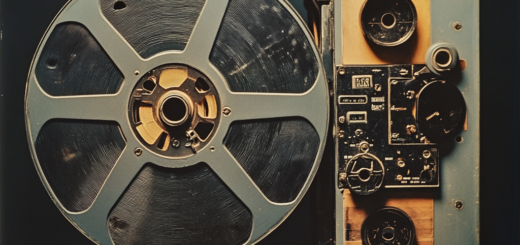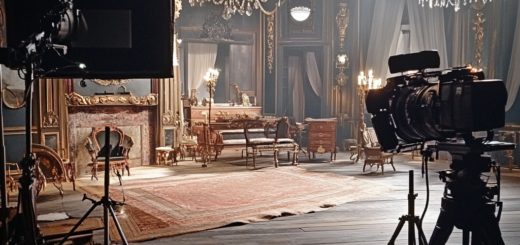Museum of the 21st century: How technology is changing the perception of classical art
Museum in the 21st century: the new role of art in the digital age
The Museum, as a cultural institution, has always been associated with the preservation and demonstration of the cultural heritage of mankind. But in the 21st century, its role is changing, and new technologies are becoming a powerful tool capable of rethinking how we perceive art. The museum is no longer limited to providing viewers with static paintings, sculptures, or archaeological artifacts. Now it is a space where art meets new media, digital technologies and interactive forms.
With the rapid development of technology, the museum environment is beginning to undergo significant changes. Modern museums are becoming platforms for audience engagement, where technology serves not only as tools for improving visual perception, but also creates completely new ways of interacting with works of art. Viewers are no longer only passive observers, but also active participants in the processes, creating unique and meaningful impressions.
Technology as a tool for interaction between the viewer and the work
With the development of technology, the museum not only improves the ways of presenting art, but also completely changes the approach to interacting with it. Technology is becoming the basis of new art forms and the experience of works for the audience. Museums are increasingly using augmented and virtual reality, touchscreens, holography and other innovative solutions to give viewers the opportunity not only to watch, but also to interact with works of art.
Digital technologies open up new horizons for the study of works. For example, using 3D scanning, it is possible to accurately recreate works of art in digital form, so that viewers can view them from all sides, study details that cannot be noticed under normal conditions. Interactive screens and applications allow viewers to immerse themselves in art, not limited to static exhibits, but creating their own interaction experience.
Digitalization of art: from images to virtual galleries
The digitalization of art opens up new opportunities for the dissemination and preservation of works. Technology makes it possible to digitize works of art, making them accessible to a wide range of viewers, regardless of geographical location. Virtual galleries created using 3D modeling technologies provide an opportunity to “visit” a museum from the comfort of your home and get to know works of art without time or space constraints. The digitalization of art is not limited to the creation of virtual exhibitions. It also includes the use of artificial intelligence to analyze and create new works of art. AI can help in the restoration of antique paintings, as well as create new works based on classical styles. In this context, digitalization is not only changing the way art is perceived, but also affecting its creation and preservation.
Digital technologies have also allowed museums to create interactive spaces where viewers can not only watch, but also “immerse themselves” in a work of art. These spaces can be realized using augmented reality or video projections, turning the museum into a living space for creativity and interactive interaction.
Interactive exhibitions: How technology transforms classical art into an experience
Technology is transforming the perception of art by adding elements of interactivity and making viewers active participants in the artistic process. Now you can not only contemplate art, but also interact with it, turning classic exhibitions into dynamic, multi-layered spaces.
Major innovations in art:
- Touch technology allows viewers to change the colors of a painting, activate sound effects, and influence multimedia elements with gestures or touches.
- Augmented reality (AR) — superimposes virtual elements on real objects, expanding the boundaries of traditional perception of works.
- Immersive exhibitions — the viewer becomes a part of the exhibition, moving into artistic worlds created using 3D projections and surround sound.
- Interactive multimedia installations — allow you to control the plot and content of works, making art personalized.
- As a result, the viewer finds himself in a unique situation where classical art interacts with advanced technologies, creating a completely new experience of perception and immersion in the artistic space.
The future of museums: the role of artificial intelligence and virtual reality
One of the most promising areas for museums of the future is the use of artificial intelligence and virtual reality. Artificial intelligence can change not only the way art is created, but also how it interacts with art. Virtual reality allows you to create new forms of perception, where viewers can not only observe, but also actively participate in the work, move through space and time.
In the future, artificial intelligence and virtual reality will become essential tools for creating and distributing art. Virtual tours of museums and galleries will allow people from different parts of the world to get acquainted with works of art, even without leaving their homes. Moreover, artificial intelligence will help create art based on the analysis of huge amounts of data, opening up new horizons for artists and viewers.
The Museum as a space for rethinking the traditions of art
In the future, the museum will increasingly turn into a space where art becomes dynamic and changeable, rather than a fixed object. The Museum of the 21st Century is a place where traditional concepts of art are rebooted and enriched with the help of new technologies. Here, classical paintings and modern multimedia installations can coexist in one space. Modern museums will offer viewers not just to observe art, but to interact with it. This not only changes the perception of art, but also helps to rethink traditions, deepening our understanding of cultural heritage.
Museums of the future can become places for creativity, where the viewer will not only be a spectator, but also a co-author. Instead of just watching a painting, viewers will be able to create their own interpretations of works of art or change them in real time using technology. Thus, the museum of the 21st century will increasingly open up to new ideas and opportunities, creating a space for a variety of cultural approaches.
Questions and answers
Museums of the 21st century actively use virtual and augmented reality technologies, artificial intelligence, touch screens, as well as multimedia installations that allow viewers not only to observe art, but also to interact with it.
Digitalization allows for the digitization of works of art and the creation of virtual galleries, enabling viewers around the world to explore exhibits without visiting physical museums.
Interactive exhibitions use new technologies such as sensors and augmented reality to enable viewers to actively interact with works of art, changing them, immersing themselves in their atmosphere, or creating unique visual and sound effects.
Artificial intelligence can analyze existing works of art, help create new works, and participate in the restoration and preservation of cultural heritage.
In the future, museums will integrate new technologies such as virtual reality, artificial intelligence, and sensory interfaces to create dynamic and interactive spaces where viewers will become active participants rather than just observers.



